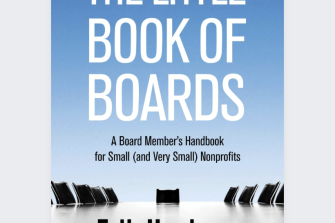Both books come from the pens of noted New York Times journalists and were released in 2022. Given the crossover in themes and often common clients, one assumes they must have at least been aware of each other’s projects. Both are thorough and meticulous examinations of two specific companies: McKinsey, arguably the world’s most influential management consultants, and Jones Day, one of America’s biggest law firms.
In both cases, the authors do point out that undoubtedly some good work is done along with some solid, social-good, pro bono work. But the overall picture painted is not flattering. Joseph Stiglitz’s comments inside the jacket of the McKinsey book apply equally to both organisations: ‘…hypocrisy, avarice, ridiculous PowerPoints, aiding and abetting the world’s polluters and drug companies. Every page made my blood boil.’
Now nearly a century old, McKinsey employs 30,000 people across 130 locations. Like Jones Day, its alumni spread far and wide and continue to be of considerable utility. McKinsey is expert in playing both sides, often maintaining clients competing in the same sector. But most marked is the billion dollars plus in state and federal consulting contracts, many advising government agencies that regulate the company’s other clients in pharmaceuticals, hospitals and insurance. For instance, they worked for the US Department of Defense while pursuing aggressive expansion in China, including companies contributing to Chinese military build-up.
The classic McKinsey approach of cutting costs and offshoring labour is outlined as applied in multiple settings, generally for short-term gain and the long-term misery of many.
McKinsey was forced to apologise for its role in ‘turbocharging’ opioid sales and had to pay nearly $US600m to settle multiple investigations. Even in the face of increasing negative evidence, the firm continued to help push sales and resist regulation, all while also working for the FDA.
At the same time, Jones Day was also working for Purdue Pharma. The book’s chapter ‘Redefining Shamelessness’ outlines how far the firm went to bury actions against its client Walmart, accused of fuelling the epidemic. Their multiple alumni now embedded in Trump’s Justice department effectively halted criminal and civil cases despite overwhelming evidence at hand.
Both books have long lists of the ethically dubious. McKinsey made a fortune from tobacco, vaping and even gambling. Former partner Lou Gerstner was for a time CEO of RJ Reynolds, one of several tobacco clients and a major stream of McKinsey revenue.
At Enron, McKinsey consultants ‘burrowed into the company like armies of carpenter ants’. A McKinsey partner sat in on board meetings. Enron CEO Jeff Skilling was ex McKinsey. Many wondered why they were deeply involved in an organisation that had difficultly explaining how it made money.
Add in some questionable work in Saudi Arabia, South Africa, the previous Ukrainian regime and Russia—and the overall picture is not rosy. As a former McKinsey consultant noted, ‘forget secret cabals, illuminati, lizard people, or globalists, instead there is McKinsey’.
Servants of the Damned’s first chapter starts with the East Ohio Gas disaster in 1944. The gas tank explosion killed 130 people and hospitalised 225 more. The company’s lawyers, Jones Day, recommended admitting fault and said the company had an obligation to recompense the community it had shattered. Within a month, over $US100m (in today’s dollars) had been paid to hundreds of people. Decades later, victims still perceive the process to have been fast and fair.
The prologue gives a contrasting perspective. Jones Day headquarters in Washington occupies the elegant neo-classical building of the former Acacia Life Insurance Company. In stark contrast to the laudable approach above, anyone on the building roof top on January 6, 2021, with its splendid view of the Capitol, would have seen in detail the mob storming the building, being ‘the predictable culmination of a president whom Jones Day helped elect, an administration the firm’s lawyers had helped run and an election whose integrity the firm had helped erode’.
Again, there is a list of questionable clients and causes including: the Catholic Church—minimise exposure to sexual abuse claims; Abbot Laboratories—quash brain damage actions resulting from its tainted baby formula; Fox News—defend sexual harassment actions; Johnson & Johnson—avoid pay-outs to cancer victims and multiple actions against labour unions.
The authors point out that Jones Day is not ‘uniquely terrible’ nor is it an ‘evil institution’. Many of its 2,500 lawyers diligently represent clients in an ethical manner and donate countless hours of lifesaving work to those who desperately need legal assistance.
But sometime after Ohio Gas, the legal industry lost its way, becoming, ‘enablers of the business world’s worst misbehaviour’. The book lays out the revolving door of lawyers in an out of the various administrations. But the Jones Day role in the Trump presidency was something beyond.
Jones Day got in behind Trump early, notably Don McGahn, who went on to be White House counsel and had an outsized influence on judicial appointments under Trump. The White House and the Justice Department became ‘jammed with Jones Day lawyers’. Jones Day even paid special bonuses to some people crossing over to the new administration. In September 2017, the Senate confirmed another Jones Day representative, Noel Francisco, into the role of solicitor general—giving the company the two most powerful legal jobs in the US government. After the fall of Trump, many of the Jones Day people simply slid back into the company but their influence—especially in appointments to the bench—will last generations.
Should you read these books? As with Joseph Stiglitz, they will make you angry, at least in part. They are thoroughly researched products of investigative journalism at a level that we rarely see in this country. They are not a ringing endorsement of human nature but should serve as a useful warning of things that we can do without here in Aotearoa New Zealand.








